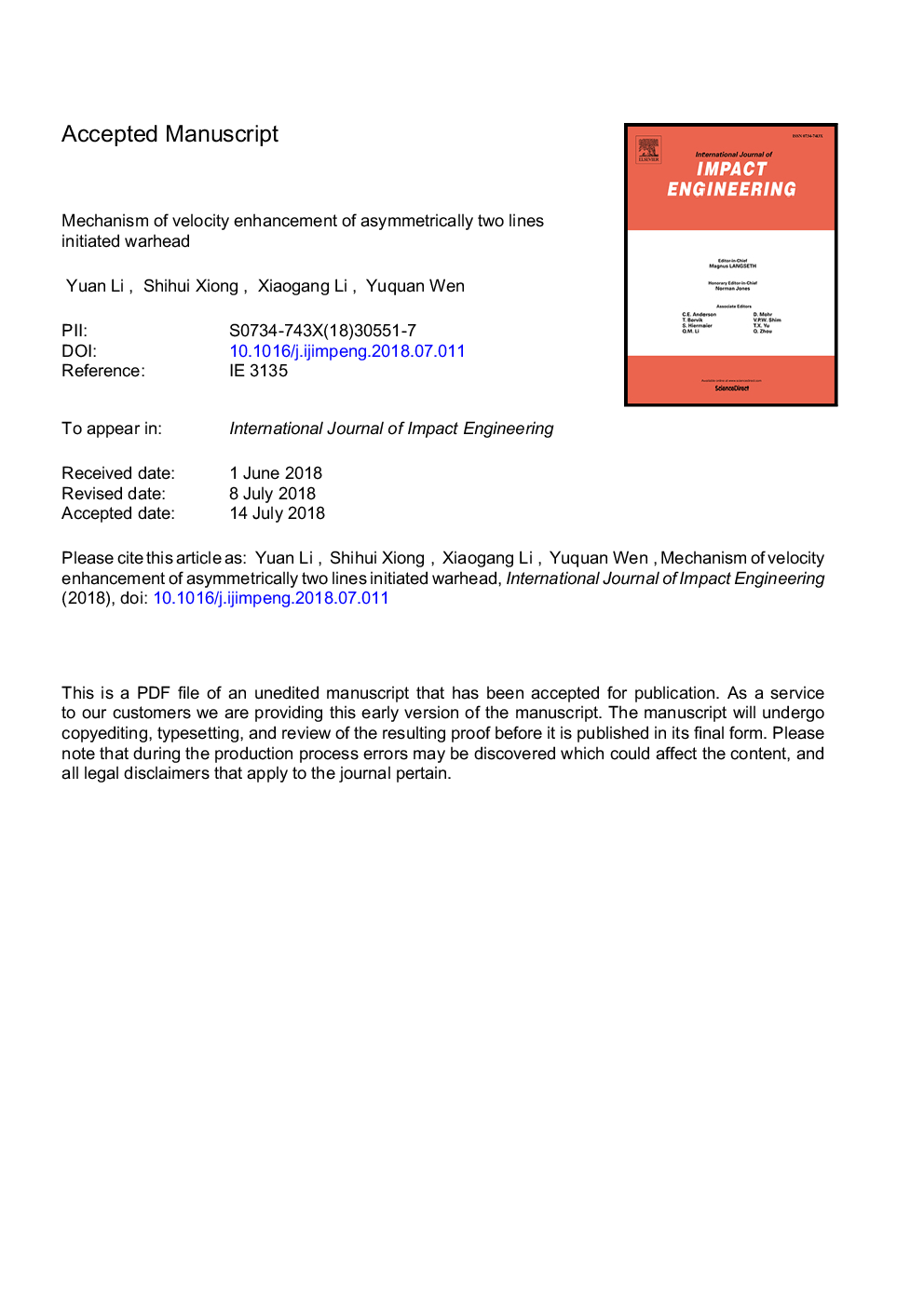| Article ID | Journal | Published Year | Pages | File Type |
|---|---|---|---|---|
| 10133771 | International Journal of Impact Engineering | 2018 | 42 Pages |
Abstract
Asymmetrically initiated warhead is an easily accessible aimable warhead concept. Lots of studies have been conducted on this warhead type, but most of them are about the asymmetrical one line initiation and some performance evaluations of the asymmetrically two lines initiated warhead. The velocity enhancement mechanism of asymmetrically two lines initiated warhead is rarely touched and not very clear. In this work, the mechanism of velocity enhancement of asymmetrically two lines initiated warhead is studied by Mach reflection theory and the verified numerical modeling. And a new formula of computing the fragment velocity in the aiming direction (opposite direction of the initiators) is proposed. The theories of two detonation waves' interaction are first reviewed. And then the applicability of JWL equation of state (EOS) and the Lee Tarver EOS in modeling of the asymmetrical multi-point initiation is studied. The pressure results show that charge with Lee Tarver EOS but not the JWL EOS could produce the Mach wave very well. Additionally the precise of the numerical modeling with Lee Tarver EOS is verified by the good coincidence between the different algorithms' results and also the coincidence with the experiment result under end face center initiation. Based on the verified numerical modeling, situations under different central angles of the initiation lines are further modeled and the fragment velocities of aiming direction are evaluated. It's revealed that the fragment velocity goes up and down along with the increase of the central angle of the initiation lines, which is explained as a mutual result of the detonation distance and the Mach wave pressure. Finally, based on Gurney equation, a new formula for fragment velocity in the aiming direction is proposed, account for the detonation distance and the pressure. Experiments are conducted to verify the formula and the results show that the new formula could predict the velocity very well. This work could offer a good reference for the aimable warhead design and evaluation.
Keywords
Related Topics
Physical Sciences and Engineering
Engineering
Mechanical Engineering
Authors
Yuan Li, Shihui Xiong, Xiaogang Li, Yuquan Wen,
